The Wrecked House | Dorich House in the Early 1990’s
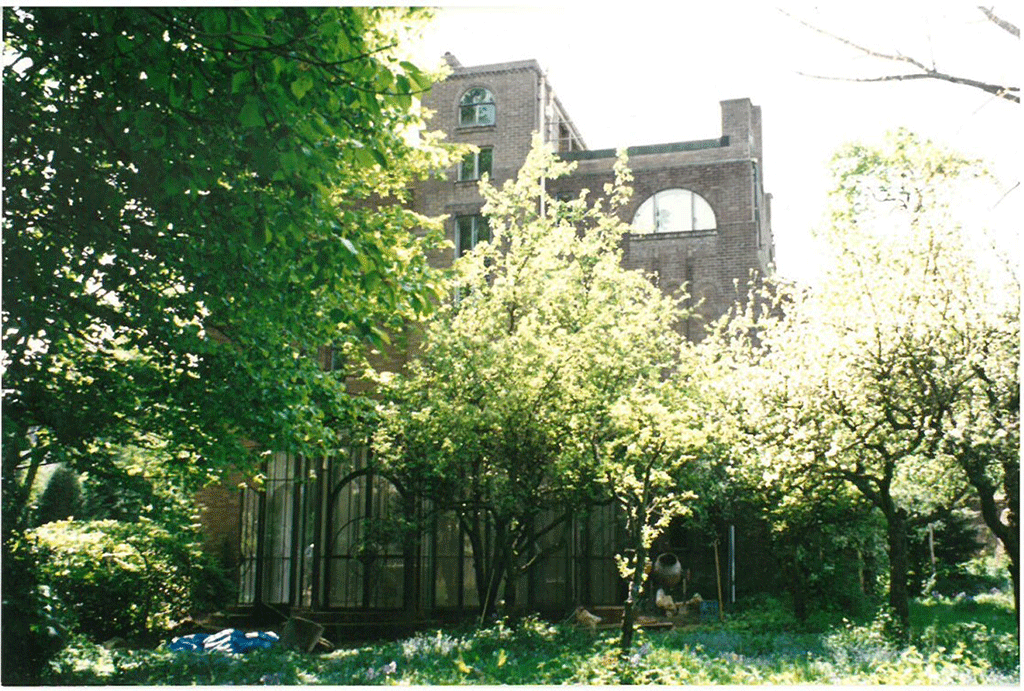
Built in 1936 and acknowledged for its architectural significance through Grade II listing in 1983, Dorich House was in a state of dilapidation when Dora Gordine died in December 1991 at the age of 96. Following the premature death of her husband the Hon. Richard Hare in 1966, Gordine lived alone at Dorich House for a quarter of a century. Her professional career as a sculptor had ended in the mid-1970s and, with failing eyesight, Gordine became increasingly frail and less mobile with old age. Although she still had regular visitors, who were often pressed into helping her with minor chores, she lived predominantly in the top floor apartment, neglecting the upkeep of the house and garden.
Following Gordine’s death, squatters occupied Dorich House and parties were held in the grounds. The house was also used as the set of a BBC film, Two Deaths, directed by Nicolas Roeg. The photograph above shows the remnants of the film set – a metal conservatory – attached to the front of the building. Other photographs, interviews and reports from this period show that both the house and garden required significant attention to bring them back into use.
Accounts by former Kingston University staff members and Sally Brown of David Brown and Partners, the architects engaged to renovate Dorich House, reveal the full extent of disrepair when the University acquired the building.
Isobel Porter, then Campus Manager at Kingston Hill and responsible for Dorich House at the time, recalled “the house was in a state of major decay – fire damage in a number of areas – especially on the walls of the staircase leading up to the top floor” and noted that the flat roof of the house had resulted in many leaks.
Photographs of the outside of the building show ivy covering the glazed northern elevations of Gordine’s former studios, filthy windows, and an overgrown jungle-like garden.
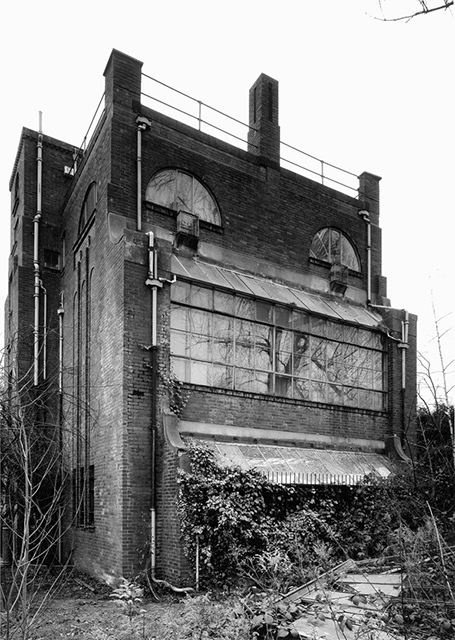
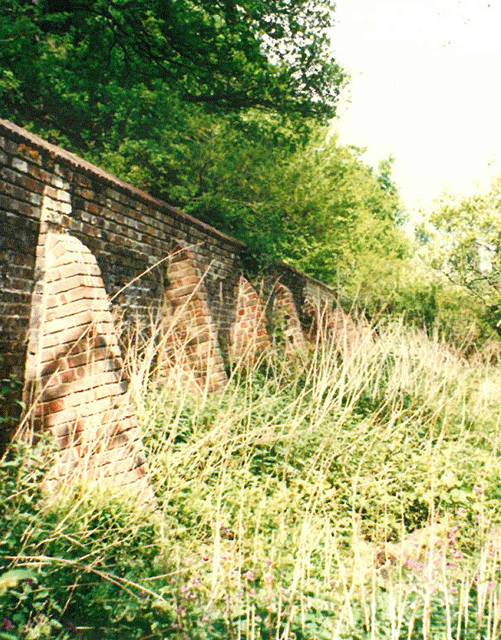
Sally Brown remembers her first visit to Dorich House, “It looked terrible… it was in total neglect… It was obviously incredibly interesting. The site was overgrown. It was completely sad as a place”.
Jeremy Schomberg, a former gardener at Kingston University, was responsible for the early clearing of the grounds and shared memories of his first sight of the garden. “It was quite dishevelled, quite rundown… it was all overgrown and I do recall there being a tennis court…. But primarily it was all of a terrible state”. Despite the jungle-like state of the garden he remembered “there was structure… that it quite obviously was laid out and planned by someone of substance… someone who knew what they were doing. [It] was well thought out.” It had “good potential to be brought back in as a quality property”. Schomberg also recalled the mixture of oak, sweet chestnut, apple and lime trees growing in the garden and in addition, vegetables. “ I remember things like aubergines growing there, which is quite strange…aubergines and tomatoes. Maybe a little sort of allotment planting”.
A situation report by David Brown and Partners, dated 17 October 1994, provided a broad assessment of the site and proposed works, giving the University a basis on which to make decisions about the renovation and extent of the work required.
Many elements of the building were in such a poor state of repair that they could not be remedied. These failures were in equal measure due to the wrong materials having been used and inadequate construction detailing.
Almost all the windows were so badly rusted that full replacement was the only logical course of action. The window frames were of inadequate strength and the inconsistent cill details had resulted in water ingress and rot.
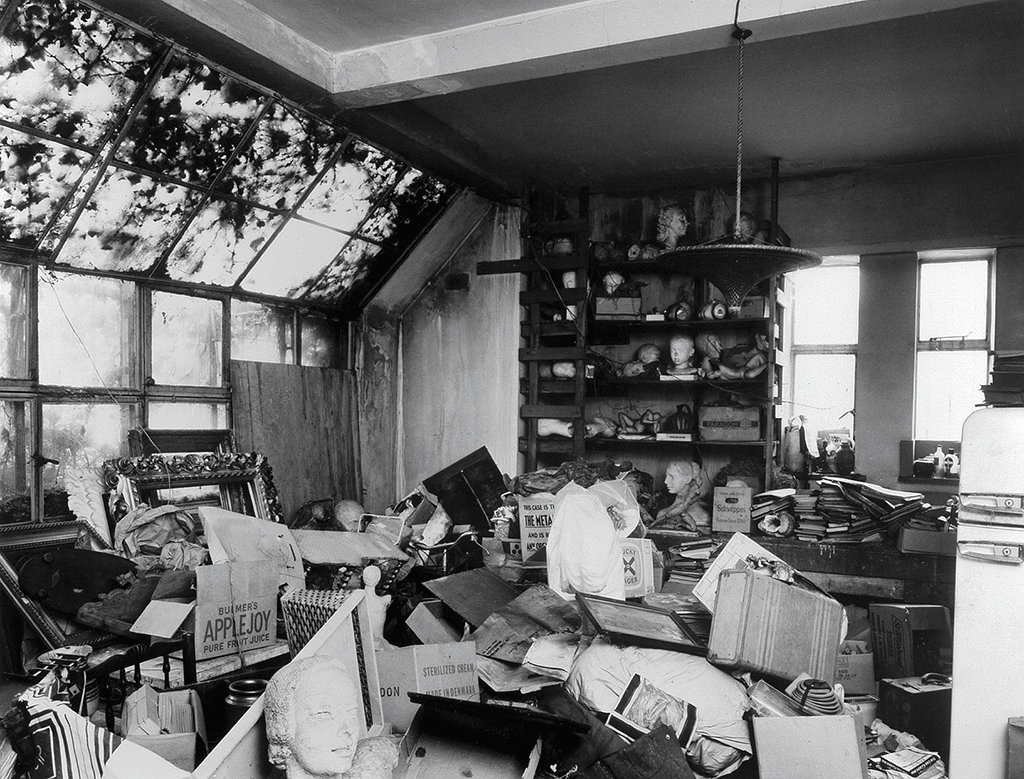
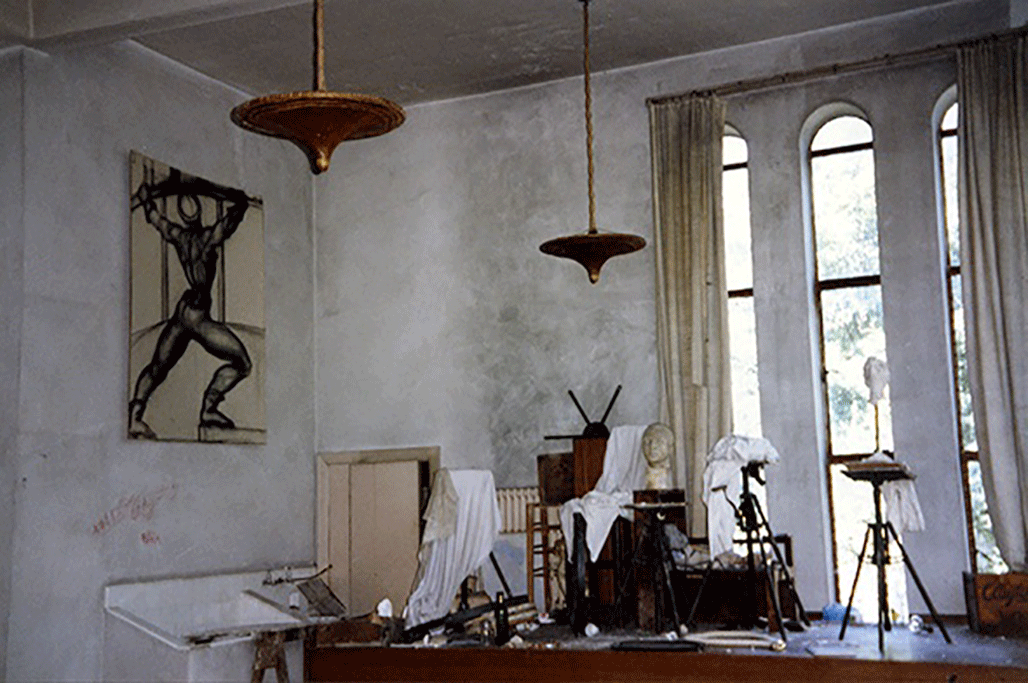
The flat roof construction had also caused major problems with water penetration through window frames and leaks at upper levels of the building, a David Brown and Partners report noting that “the original drawings vary to such a degree from what was actually built at this level they they do not assist with explanation of the original detail”.
Sally Brown recalled that on “the top floor terrace and sleeping area, the roofing had to be completely lifted because the whole thing was leaking like a sieve”. The condition report indicated that “the curved abutments at first and second floor level on either side of the large north facing studio windows are entirely defunct, having been constructed merely of render over brickwork”.
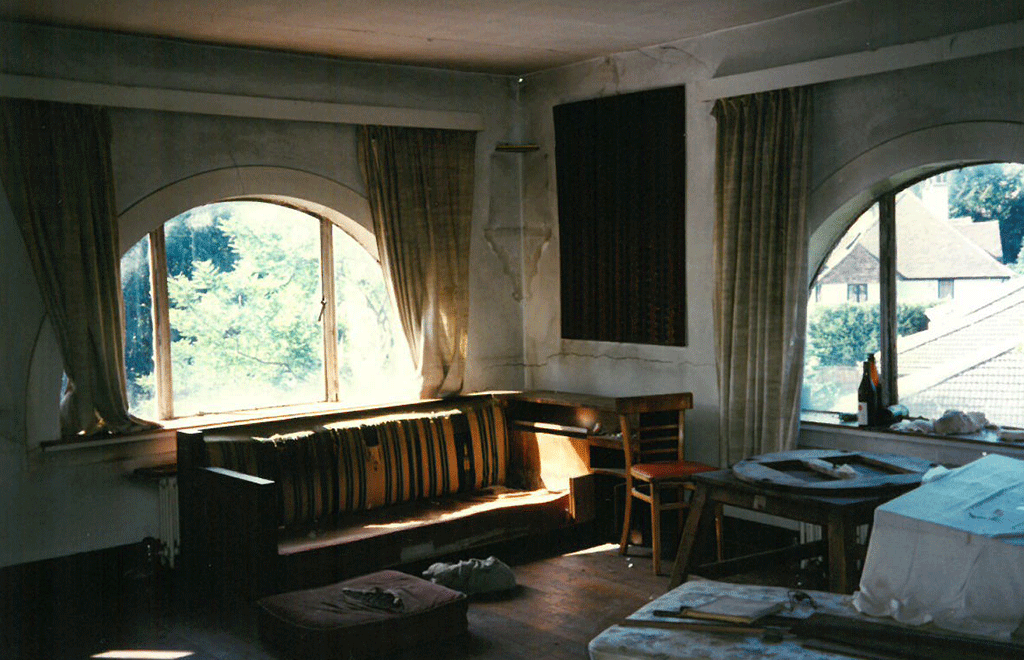
Paint peeled from the walls due to damp and “the main studio floor was heaving, it was a timber strip floor and because of water coming in had heaved into great humps which were nearly a foot high in some places, it was terrible”.
The existing heating and electrical systems were beyond their useful life and all needed replacing. There were ”huge hot water pipes embedded in the corners between the floors and the walls, which was very strange and bad structurally”.
Gordine’s ambitious vision for Dorich House resulted in a building that Sally Brown described as “standalone, and for that reason… very interesting… but she [Gordine] left it to the builder she was working with to try and work out the details of how it could be constructed, having said what she wanted. And in certain respects, it was very peculiar in its details, and that is why it failed structurally or building-wise so quickly after they moved in, because it started to deteriorate quite quickly…. But she was really pushing in terms of what she was trying to achieve”.
Fortunately, the vision of the University’s leaders at that time and an excellent team of architects and structural engineers were able to see through the decay to restore Dorich House to the building it is today, ensuring the lasting legacy of the intriguing artist who designed it.
Published as part of the project The Squatter Years: Recovering Dorich House Museum’s Recent Past, funded by the National Lottery Heritage Fund, February 2021.

